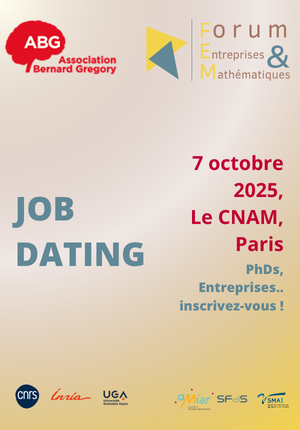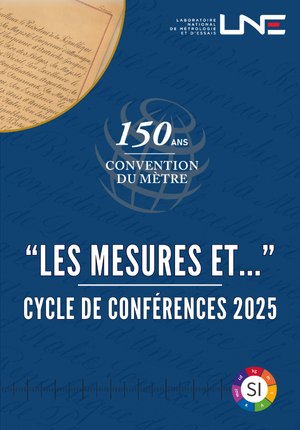Caractérisation des défauts de fabrication additive et leur impact sur la dynamique des rotors // Characterization of Additive Manufacturing Defects and Their Impact on Rotor Dynamics
|
ABG-132589
ADUM-66612 |
Thesis topic | |
| 2025-06-20 |
Université de Bordeaux
BIDART - Nouvelle Aquitaine - France
Caractérisation des défauts de fabrication additive et leur impact sur la dynamique des rotors // Characterization of Additive Manufacturing Defects and Their Impact on Rotor Dynamics
- Electronics
Fabrication additive, Défauts de fabrication, Dynamique des rotors, Amortissement structurel, Résistance à la fatigue, DED
Additive Manufacturing, Manufacturing defects, Rotor Dynamics, Structural damping, Fatigue resistance, Directed Energy Deposition
Additive Manufacturing, Manufacturing defects, Rotor Dynamics, Structural damping, Fatigue resistance, Directed Energy Deposition
Topic description
La fabrication additive constitue une avancée technologique majeure, bouleversant en profondeur notre manière de concevoir et de produire des systèmes complexes, notamment dans les secteurs de l'aéronautique et du spatial. Cette technologie de rupture joue un rôle central dans la transition vers une aviation plus durable, en permettant une réduction significative de l'empreinte carbone grâce à l'allègement substantiel des composants.
Dans ce contexte, notre attention se porte plus particulièrement sur l'optimisation des arbres de machines tournantes — éléments clés des turbomachines et des réacteurs — en explorant les apports potentiels de la fabrication additive. En effet, ces procédés permettent de structurer la matière déposée à différentes échelles, ouvrant ainsi de nouvelles perspectives pour optimiser le comportement vibratoire des pièces.
Bien que la fusion sur lit de poudre par laser (Laser Powder Bed Fusion, LPBF) offre un excellent contrôle géométrique, les procédés de dépôt direct d'énergie (Directed Energy Deposition, DED) — qu'ils utilisent du fil ou de la poudre — apparaissent plus pertinents d'un point de vue économique, compte tenu de la forme élancée et des dimensions (environ 50 cm) de l'arbre final.
Par nature, la fabrication additive induit des défauts que l'on peut regrouper en trois grandes catégories :
- Les défauts de forme, principalement dus aux cycles thermiques et à l'accumulation de contraintes résiduelles, entraînant des déformations au cours du processus de fabrication ;
- Les défauts de dépôt de matière, responsables d'une ondulation de surface sur la pièce finale ;
- Les défauts spécifiques à la poudre (dans le cas du DED à base de poudre), où certaines particules peuvent ne pas être totalement fondues à la surface.
À ces défauts géométriques s'ajoutent des hétérogénéités internes du matériau, qui se traduisent par une anisotropie des propriétés élastiques.
Ces imperfections influencent directement le comportement dynamique de l'arbre, en affectant notamment les modes propres, l'amortissement structurel et la résistance à la fatigue.
Les objectifs de cette thèse de doctorat sont les suivants :
- Réaliser une caractérisation fine et détaillée de ces défauts ;
- Étudier leur impact sur le comportement dynamique du rotor, en mettant l'accent sur les propriétés modales et l'amortissement ;
- Évaluer leur influence sur la résistance à la fatigue de la pièce finale.
L'approche adoptée sera principalement expérimentale, en partant de structures simplifiées pour évoluer progressivement vers un démonstrateur représentatif d'un cas d'usage industriel. Un banc d'essai dédié sera développé en collaboration avec les équipes de Turbolab et Akira.
------------------------------------------------------------------------------------------------------------------------------------------------------------------------
------------------------------------------------------------------------------------------------------------------------------------------------------------------------
Additive manufacturing represents a major technological breakthrough, profoundly transforming our approach to the design and production of complex systems, particularly in the aerospace and space sectors. This disruptive technology is expected to play a key role in the transition toward more environmentally friendly aviation, by significantly reducing the carbon footprint through the substantial weight reduction of components.
In this context, our focus is particularly on the optimization of rotating machine shafts—critical components of turbomachinery and jet engines—by exploring the benefits that additive manufacturing can bring to them. On one hand, additive processes enable the structuring of deposited material at multiple scales, thereby offering new degrees of freedom to optimize the vibrational behavior of parts.
While Laser Powder Bed Fusion (LPBF) offers better control over the geometry of manufactured parts, it appears economically more reasonable to consider Directed Energy Deposition (DED) processes—using either wire or powder—given the slender shape and size (on the order of 50 cm) of the final shaft.
Due to the very nature of additive manufacturing, these parts exhibit defects that can be categorized into three main types:
- Shape defects, primarily related to thermal cycles and the accumulation of residual stresses, which cause deformations during the manufacturing process;
- Material deposition defects, leading to surface waviness on the final part;
- Powder-specific defects (in the case of powder-based DED), where powder particles may be only partially melted on the surface of the part.
In addition to these geometric defects, internal material defects arise, resulting in anisotropy of the material's elastic properties.
These defects have a direct influence on the dynamic behavior of the shaft, particularly affecting natural modes, structural damping, and fatigue resistance.
The objectives of this PhD thesis are:
- To perform a detailed characterization of these defects;
- To investigate their impact on the dynamic behavior of the rotor, with a focus on modal properties and structural damping;
- To assess their impact on the fatigue resistance of the final part.
The approach will be primarily experimental, starting from simplified structures and gradually progressing toward a demonstrator representative of an industrial use case. A dedicated test bench will be developed in collaboration with the Turbolab and Akira teams.
------------------------------------------------------------------------------------------------------------------------------------------------------------------------
------------------------------------------------------------------------------------------------------------------------------------------------------------------------
Début de la thèse : 01/10/2025
Dans ce contexte, notre attention se porte plus particulièrement sur l'optimisation des arbres de machines tournantes — éléments clés des turbomachines et des réacteurs — en explorant les apports potentiels de la fabrication additive. En effet, ces procédés permettent de structurer la matière déposée à différentes échelles, ouvrant ainsi de nouvelles perspectives pour optimiser le comportement vibratoire des pièces.
Bien que la fusion sur lit de poudre par laser (Laser Powder Bed Fusion, LPBF) offre un excellent contrôle géométrique, les procédés de dépôt direct d'énergie (Directed Energy Deposition, DED) — qu'ils utilisent du fil ou de la poudre — apparaissent plus pertinents d'un point de vue économique, compte tenu de la forme élancée et des dimensions (environ 50 cm) de l'arbre final.
Par nature, la fabrication additive induit des défauts que l'on peut regrouper en trois grandes catégories :
- Les défauts de forme, principalement dus aux cycles thermiques et à l'accumulation de contraintes résiduelles, entraînant des déformations au cours du processus de fabrication ;
- Les défauts de dépôt de matière, responsables d'une ondulation de surface sur la pièce finale ;
- Les défauts spécifiques à la poudre (dans le cas du DED à base de poudre), où certaines particules peuvent ne pas être totalement fondues à la surface.
À ces défauts géométriques s'ajoutent des hétérogénéités internes du matériau, qui se traduisent par une anisotropie des propriétés élastiques.
Ces imperfections influencent directement le comportement dynamique de l'arbre, en affectant notamment les modes propres, l'amortissement structurel et la résistance à la fatigue.
Les objectifs de cette thèse de doctorat sont les suivants :
- Réaliser une caractérisation fine et détaillée de ces défauts ;
- Étudier leur impact sur le comportement dynamique du rotor, en mettant l'accent sur les propriétés modales et l'amortissement ;
- Évaluer leur influence sur la résistance à la fatigue de la pièce finale.
L'approche adoptée sera principalement expérimentale, en partant de structures simplifiées pour évoluer progressivement vers un démonstrateur représentatif d'un cas d'usage industriel. Un banc d'essai dédié sera développé en collaboration avec les équipes de Turbolab et Akira.
------------------------------------------------------------------------------------------------------------------------------------------------------------------------
------------------------------------------------------------------------------------------------------------------------------------------------------------------------
Additive manufacturing represents a major technological breakthrough, profoundly transforming our approach to the design and production of complex systems, particularly in the aerospace and space sectors. This disruptive technology is expected to play a key role in the transition toward more environmentally friendly aviation, by significantly reducing the carbon footprint through the substantial weight reduction of components.
In this context, our focus is particularly on the optimization of rotating machine shafts—critical components of turbomachinery and jet engines—by exploring the benefits that additive manufacturing can bring to them. On one hand, additive processes enable the structuring of deposited material at multiple scales, thereby offering new degrees of freedom to optimize the vibrational behavior of parts.
While Laser Powder Bed Fusion (LPBF) offers better control over the geometry of manufactured parts, it appears economically more reasonable to consider Directed Energy Deposition (DED) processes—using either wire or powder—given the slender shape and size (on the order of 50 cm) of the final shaft.
Due to the very nature of additive manufacturing, these parts exhibit defects that can be categorized into three main types:
- Shape defects, primarily related to thermal cycles and the accumulation of residual stresses, which cause deformations during the manufacturing process;
- Material deposition defects, leading to surface waviness on the final part;
- Powder-specific defects (in the case of powder-based DED), where powder particles may be only partially melted on the surface of the part.
In addition to these geometric defects, internal material defects arise, resulting in anisotropy of the material's elastic properties.
These defects have a direct influence on the dynamic behavior of the shaft, particularly affecting natural modes, structural damping, and fatigue resistance.
The objectives of this PhD thesis are:
- To perform a detailed characterization of these defects;
- To investigate their impact on the dynamic behavior of the rotor, with a focus on modal properties and structural damping;
- To assess their impact on the fatigue resistance of the final part.
The approach will be primarily experimental, starting from simplified structures and gradually progressing toward a demonstrator representative of an industrial use case. A dedicated test bench will be developed in collaboration with the Turbolab and Akira teams.
------------------------------------------------------------------------------------------------------------------------------------------------------------------------
------------------------------------------------------------------------------------------------------------------------------------------------------------------------
Début de la thèse : 01/10/2025
Funding category
Funding further details
Région
Presentation of host institution and host laboratory
Université de Bordeaux
Institution awarding doctoral degree
Université de Bordeaux
Graduate school
209 Sciences Physiques et de l'Ingénieur
Candidate's profile
Le candidat devra être titulaire d'un Master ou d'un diplôme d'ingénieur en mécanique, science des matériaux ou domaine connexe.
Une appétence pour l'expérimentation est essentielle, notamment en lien avec les essais mécaniques et dynamiques.
Une expérience préalable en fabrication additive (DED ou LPBF) sera fortement valorisée.
Des compétences en analyse vibratoire, caractérisation des matériaux et modélisation mécanique seront des atouts majeurs.
The candidate must hold a Master's degree or an engineering diploma in mechanical engineering, materials science, or a related field. A strong interest in experimental work is essential, particularly in mechanical and dynamic testing. Prior experience in additive manufacturing (DED or LPBF) will be highly valued. Skills in vibration analysis, material characterization, and mechanical modeling are considered strong assets.
The candidate must hold a Master's degree or an engineering diploma in mechanical engineering, materials science, or a related field. A strong interest in experimental work is essential, particularly in mechanical and dynamic testing. Prior experience in additive manufacturing (DED or LPBF) will be highly valued. Skills in vibration analysis, material characterization, and mechanical modeling are considered strong assets.
2025-08-31
Apply
Close
Vous avez déjà un compte ?
Nouvel utilisateur ?
More information about ABG?
Get ABG’s monthly newsletters including news, job offers, grants & fellowships and a selection of relevant events…
Discover our members
 CESI
CESI  MabDesign
MabDesign  Laboratoire National de Métrologie et d'Essais - LNE
Laboratoire National de Métrologie et d'Essais - LNE 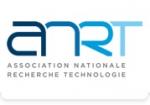 ANRT
ANRT 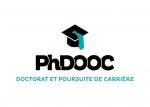 PhDOOC
PhDOOC  CASDEN
CASDEN 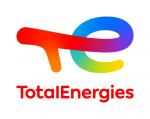 TotalEnergies
TotalEnergies  Nokia Bell Labs France
Nokia Bell Labs France  Aérocentre, Pôle d'excellence régional
Aérocentre, Pôle d'excellence régional  Généthon
Généthon  ONERA - The French Aerospace Lab
ONERA - The French Aerospace Lab  Institut Sup'biotech de Paris
Institut Sup'biotech de Paris  Ifremer
Ifremer 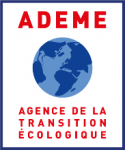 ADEME
ADEME  SUEZ
SUEZ  MabDesign
MabDesign  ASNR - Autorité de sûreté nucléaire et de radioprotection - Siège
ASNR - Autorité de sûreté nucléaire et de radioprotection - Siège  Tecknowmetrix
Tecknowmetrix  Groupe AFNOR - Association française de normalisation
Groupe AFNOR - Association française de normalisation

